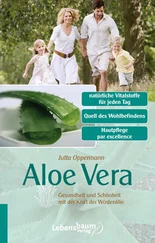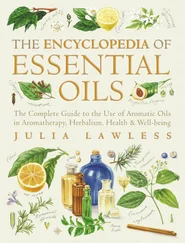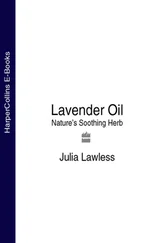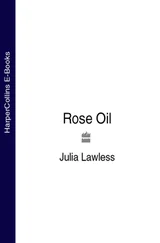 Aloe ferox or Aloe ferox ‘Miller’ has a red or reddish pink flower and has been identified as being the same plant as Aloe african ‘Miller’. Its flowers are described as orange-scarlet according to the Royal Horticultural Society. This Aloe originated in South Africa and is also referred to as the Cape Aloe. This only adds to the confusion, as in southern Africa Aloe barbadensis ‘Miller’ is known as the Cape Aloe. Nor is Aloe african ‘Miller’ the same plant as Aloe africana . Aloe africana has a yellow flower. It is not the same species and is not officially recognized as being a medicinal source.
Aloe ferox or Aloe ferox ‘Miller’ has a red or reddish pink flower and has been identified as being the same plant as Aloe african ‘Miller’. Its flowers are described as orange-scarlet according to the Royal Horticultural Society. This Aloe originated in South Africa and is also referred to as the Cape Aloe. This only adds to the confusion, as in southern Africa Aloe barbadensis ‘Miller’ is known as the Cape Aloe. Nor is Aloe african ‘Miller’ the same plant as Aloe africana . Aloe africana has a yellow flower. It is not the same species and is not officially recognized as being a medicinal source.
 Aloe perryi ‘Baker’ is otherwise known as the Socotrine or Curaçaon Aloe, after the islands of Socotra and Curaçao where it is found. Other names include Zanzibar Aloes, Uganda Aloes, Natal Aloes and Musambra Aloes. The flowers of Aloe perryi ‘Baker’ are bright red with a greenish tip.
Aloe perryi ‘Baker’ is otherwise known as the Socotrine or Curaçaon Aloe, after the islands of Socotra and Curaçao where it is found. Other names include Zanzibar Aloes, Uganda Aloes, Natal Aloes and Musambra Aloes. The flowers of Aloe perryi ‘Baker’ are bright red with a greenish tip.
 Aloe saponaria , found all over South Africa, Swaziland and Zimbabwe, is one of the spotted Aloes, with dull white oblong spots on its leaves. The flowers are orangey-yellow in colour.
Aloe saponaria , found all over South Africa, Swaziland and Zimbabwe, is one of the spotted Aloes, with dull white oblong spots on its leaves. The flowers are orangey-yellow in colour.
 Aloe vera (L.) Burm.f is the correct name for Aloe vera , which was formerly known as Aloe barbadensis ‘Miller’. According to Dr Tom Reynolds of Kew Gardens, ‘Burman had priority over Miller’s later use of the name A. barbadensis , but perhaps only be a period of 10 days … the correct name is thus Aloe vera (L.) Burm.f.’ 2It is considered very effective in healing and is characterized by its very sticky mucilage.
Aloe vera (L.) Burm.f is the correct name for Aloe vera , which was formerly known as Aloe barbadensis ‘Miller’. According to Dr Tom Reynolds of Kew Gardens, ‘Burman had priority over Miller’s later use of the name A. barbadensis , but perhaps only be a period of 10 days … the correct name is thus Aloe vera (L.) Burm.f.’ 2It is considered very effective in healing and is characterized by its very sticky mucilage.
The origins of Aloe vera is not clearly known. Some writers claim it comes from southern Africa, others from northern Africa. One of the most authoritative botanical sources, Mr Nigel Hepper, retired senior botanist at Kew Gardens, has suggested that it may come from the Yemen. This has not been proven, but the Aloe vera plant has been found in the Yemen in remote places where it was clearly not transplanted from another region. It has also been found in Tenerife in mountainous areas. In the light of early Egyptian and Mesopotamian records, it most likely comes from either the Yemen or North Africa.
Aloe vera is a clump-forming, perennial succulent with basal rosettes of tapering, thick leaves, mottled green, later turning grey-green. It is a cactus-like plant with distinctive spiky leaves whose flower stems carry bell-shaped yellow flowers in summer. From the centre of the dark green leaves of the Aloe vera plant, the flower stems, which are leafless, can reach 1.5 m (3 ft) in length and have attractive tubular-shaped bells.
The Aloe vera plant is characterized by its long tapering sharp leaves with ribbed thorny ridges along the spine. The fleshy leaves grow in a spiral shape to form a rosette pattern. This rosette pattern is a distinctive feature of Aloe vera . The soft fleshy leaves of the Aloe vera exude a watery gel or juice when cut, and contain the plant’s two main medicinal products:
1 the sap from the rind, known as the exudate
2 the gel/juice, used extensively in healing.
The leaves themselves can also be dried and made into powder (for use in beauty products). All medical aloes, however, produce a typical bitter yellowish or reddish sap which is their common characteristic.
All Aloes are part of a larger genus called Xeroids, which implies an ability to ‘shut down’ the pores (or ‘stomata’, tiny openings in the epidermis of the leaf) to ensure that water is retained within the plant. In this way they can survive long periods without water. This same ability to close the stomata in the leaf also apparently facilitates the almost miraculous closing of any wound or damage to the outer skin of the plant. The power to heal itself so rapidly and re-grow in another direction doubtless pointed the way to its use as a wound treatment.
The Aloe vera plant takes about four years to mature, by which time the gel in the outer leaves is at its most potent. When fully grown the individual leaves can reach a height of 60 to 90 cm (2 to 3 ft) and each leaf can weigh approximately 1.5 to 2 kg (3 to 4 lb). Each plant usually has 12 to 16 leaves. As a perennial, Aloe vera lives for about 12 years. When the outer leaves are harvested, up to three times a year, the plant is able to close itself down against water loss. Within a few seconds of being cut, the plant films over the wound and a protective coating forms which stops loss of sap. The outer leaves are always harvested first, allowing the inner leaves time to develop their ripeness and potency.
Although Aloe is ideally suited to growing in hot, arid climates, it can be grown in glasshouses or indoors in Europe. As it is frost-sensitive it should always be kept in warm conditions, requiring a minimum temperature of 7–10°C (45–50°F). However, although frost can kill them, the plants seldom die simply from exposure to cold unless they are very young. Tree Aloes and shrubs with a spread over 30 cm (1 ft) prefer full sun; most smaller species require partial shade. The plant also requires very well-drained soil. Ideally, in warmer climates it likes sun for at least two hours a day, porous or sandy soil and exposure to the wind. The wind actually conditions and strengthens the thick meaty leaves.
The Aloe is easily propagated since at the base of the plant, suckers or ‘pups’ grow which can be separated to make new cuttings. Apart from their requirement for warmth, an Aloe vera plant is very easy to maintain as a house plant or conservatory specimen. Watering should be infrequent and less so during winter months. Like orchids, Aloes can be killed by too much care and water!
Конец ознакомительного фрагмента.
Текст предоставлен ООО «ЛитРес».
Прочитайте эту книгу целиком, купив полную легальную версию на ЛитРес.
Безопасно оплатить книгу можно банковской картой Visa, MasterCard, Maestro, со счета мобильного телефона, с платежного терминала, в салоне МТС или Связной, через PayPal, WebMoney, Яндекс.Деньги, QIWI Кошелек, бонусными картами или другим удобным Вам способом.
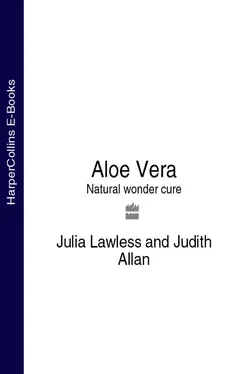
 Aloe ferox or Aloe ferox ‘Miller’ has a red or reddish pink flower and has been identified as being the same plant as Aloe african ‘Miller’. Its flowers are described as orange-scarlet according to the Royal Horticultural Society. This Aloe originated in South Africa and is also referred to as the Cape Aloe. This only adds to the confusion, as in southern Africa Aloe barbadensis ‘Miller’ is known as the Cape Aloe. Nor is Aloe african ‘Miller’ the same plant as Aloe africana . Aloe africana has a yellow flower. It is not the same species and is not officially recognized as being a medicinal source.
Aloe ferox or Aloe ferox ‘Miller’ has a red or reddish pink flower and has been identified as being the same plant as Aloe african ‘Miller’. Its flowers are described as orange-scarlet according to the Royal Horticultural Society. This Aloe originated in South Africa and is also referred to as the Cape Aloe. This only adds to the confusion, as in southern Africa Aloe barbadensis ‘Miller’ is known as the Cape Aloe. Nor is Aloe african ‘Miller’ the same plant as Aloe africana . Aloe africana has a yellow flower. It is not the same species and is not officially recognized as being a medicinal source.
